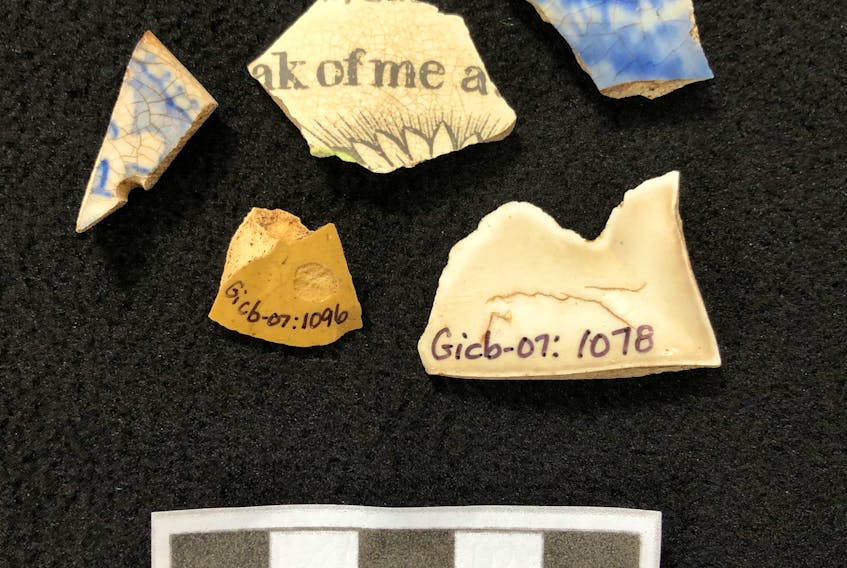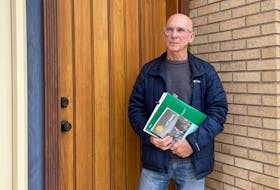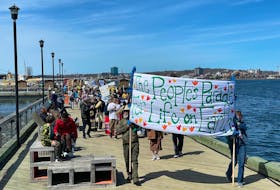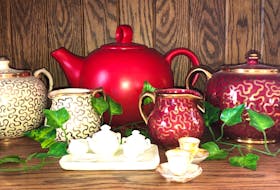HOPEDALE, N.L. — One person’s trash is another person’s treasure. That rings especially true when it comes to old landfill sites and archeologists.
One such landfill site that has yielded treasures is the Moravian Mission midden in Hopedale, on the north coast of Labrador.
Evidence of the existence of the 19-century midden, a dump for domestic waste, was found in 2002 and in 2007 five sites were identified, with thousands of artifacts recovered at the time.
Since then, the artifacts have been stored in the Hopedale Moravian Museum and the Nunatsiavut Government office in Nain.
Now, over 1,300 of those artifacts have been catalogued, labelled and interpreted with the help of a 17-year-old from Hopedale, the Newfoundland and Labrador Archeological Society (NLAS) and its Community Collections Archaeological Research Project (CCARP).

Nicholas Flowers, who recently graduated from high school, was one of five national winners of a $25,000 STEAM Horizon Award scholarship earlier this year and has participated in the Students on Ice Arctic expedition, the Canadian Student Leadership Conference in British Columbia, and co-presented at the 21st Inuit Studies Conference in Montreal.
When he was asked by NLAS to assist with the project he was very excited to help and learn more about the mission and the impact it had on the Inuit and vice-versa.
“It focuses on materials that have been discarded when people here in Hopedale first started to experience European impacts and changes in their lives. I think that the artifacts really tell the story of our community.”

Moravian missionaries arrived in Labrador in 1752 and established missions along the coast, including the one in Hopedale, which was previously used as a winter settlement by the Inuit. It was known then as Agvitok, which means ‘place of the beloved whales’ in Inuktitut. Missionaries set up in a nearby cove, which became known as Hoffenthal, which means ‘valley of hope’ in German. That settlement evolved into what is now known as Hopedale.
The former Mission in Hopedale is now a national historic site and an important part of the history of the community.

Flowers said these artifacts really show how the two cultures interacted and learned from each other. That impact is still strongly felt to this day he said, with many of the traditional practices of the Inuit on the coast learned from the Moravian missionaries.
Something that really interested him, he said, was the muzzleloader shot they found, which showed how hunting techniques had changed with the arrival of the missionaries.

It wasn’t just a one-way street, he was quick to point out, which is highlighted by some of the artifacts that had been found. One such piece is a broken piece of earthenware, obviously of European design, with a hole in it created by a bow drill. A bow drill was commonly used by the Inuit to repair household items before the arrival of the Moravians.
“You can see the relationship between the missionaries and the Inuit, which was a benefit for both cultures,” said Flowers.

Having grown up in Hopedale, he said it was fascinating to learn more about the history that was right at his doorstep and he is honoured to have been a part of adding to that record.
“Oftentimes we learn about our history throughout time and the changes that we’ve experienced as a people. Being able to see it firsthand - looking though many articles and getting information on them - it was a learning experience about our community and our people.”

This project isn’t the first foray Flowers, who is planning to pursue Environmental Science in university this fall, has had in archeology.
He did a summer work experience archeology program a few years ago and when the CCARP project was offered to him, he embraced the opportunity.
CCARP has been around since 2014 and was created by the NLAS to focus on locating and recording private collections within the province. They recruit community members to assist with the projects, which are chosen annually.
Maria Lear, past president of the NLAS and the one who enlisted Flowers for the position, said CCARP contributes to the overall story of the province by adding another piece to the shared history. It also encourages local residents to discover more about their area and spread the word of protecting archaeological contexts and artifacts, she said.
It isn’t the first time the CCARP has concentrated on artifacts from Labrador, with the Carol Brice-Bennett collection being the focus of the 2017 project. Lear said when the opportunity presented itself to work on the Moravian midden collection they jumped at the chance. It was a perfect fit, she said, since the collection was being held in a museum and they had a local researcher in mind.
Lear said while past recipients have been older, university-aged researchers, they immediately thought Flowers would be the right person for the job.
“He has shown tremendous natural ability in the field of archaeology, history, and community-oriented projects, and he's participated in a number of archaeological field seasons and projects in the past with Memorial University researchers and others from the Nunatsiavut Government.”
As part of the CCARP, Flowers wrote a report on the items and their relevance, which is available online.
He also presented his findings in a virtual session with the community on Sept. 1, to provide the people of Hopedale with more information about their history.
Flowers said he was honoured to be able to help preserve part of the history of the region and provide some insight into it. It took him months to catalogue the items and he said it wouldn’t have been possible without the help from many others, including his mother Valerie Flowers, who assisted every step of the way.

Evan Careen is a Local Journalism Initiative reporter covering Labrador for the SaltWire Network









